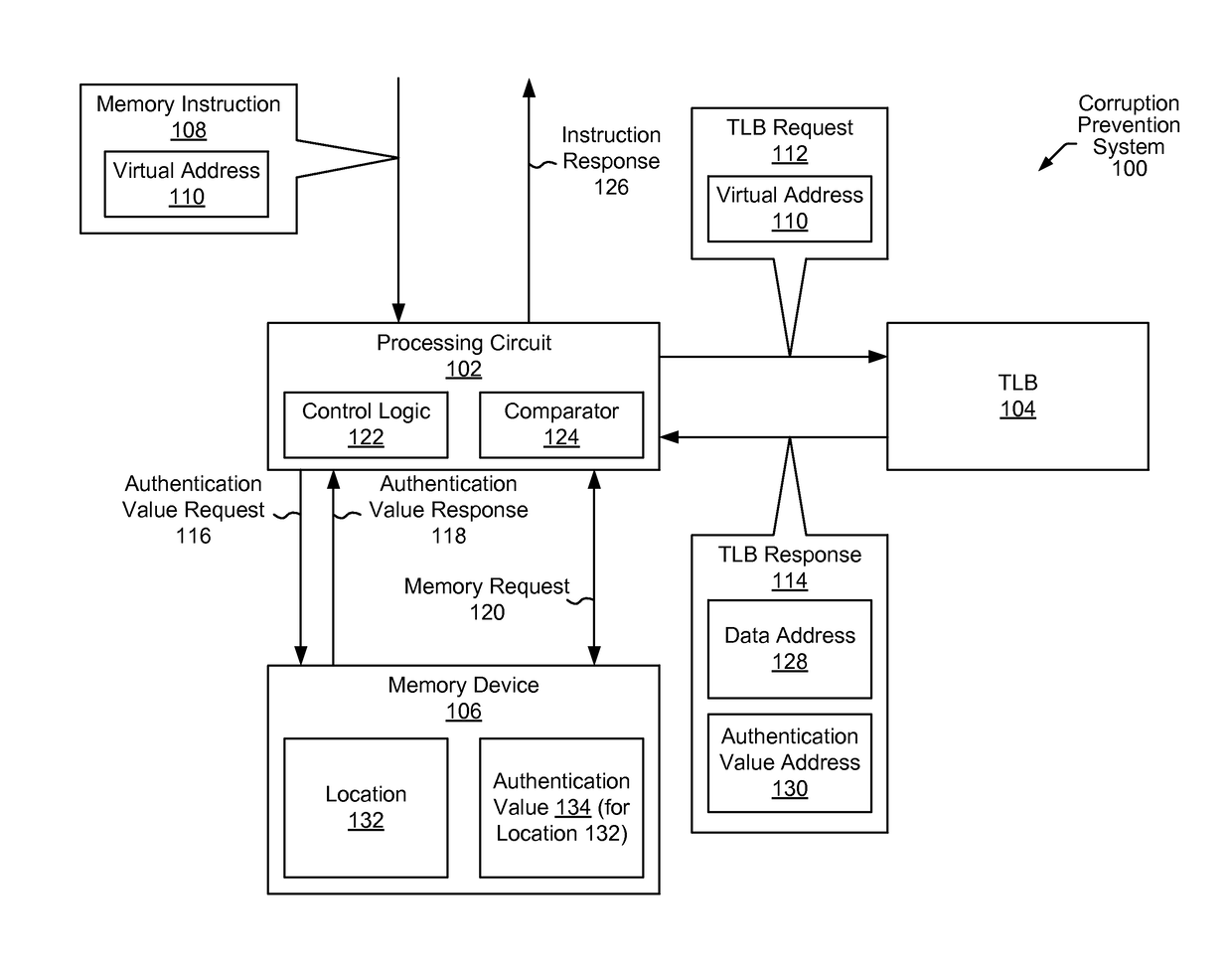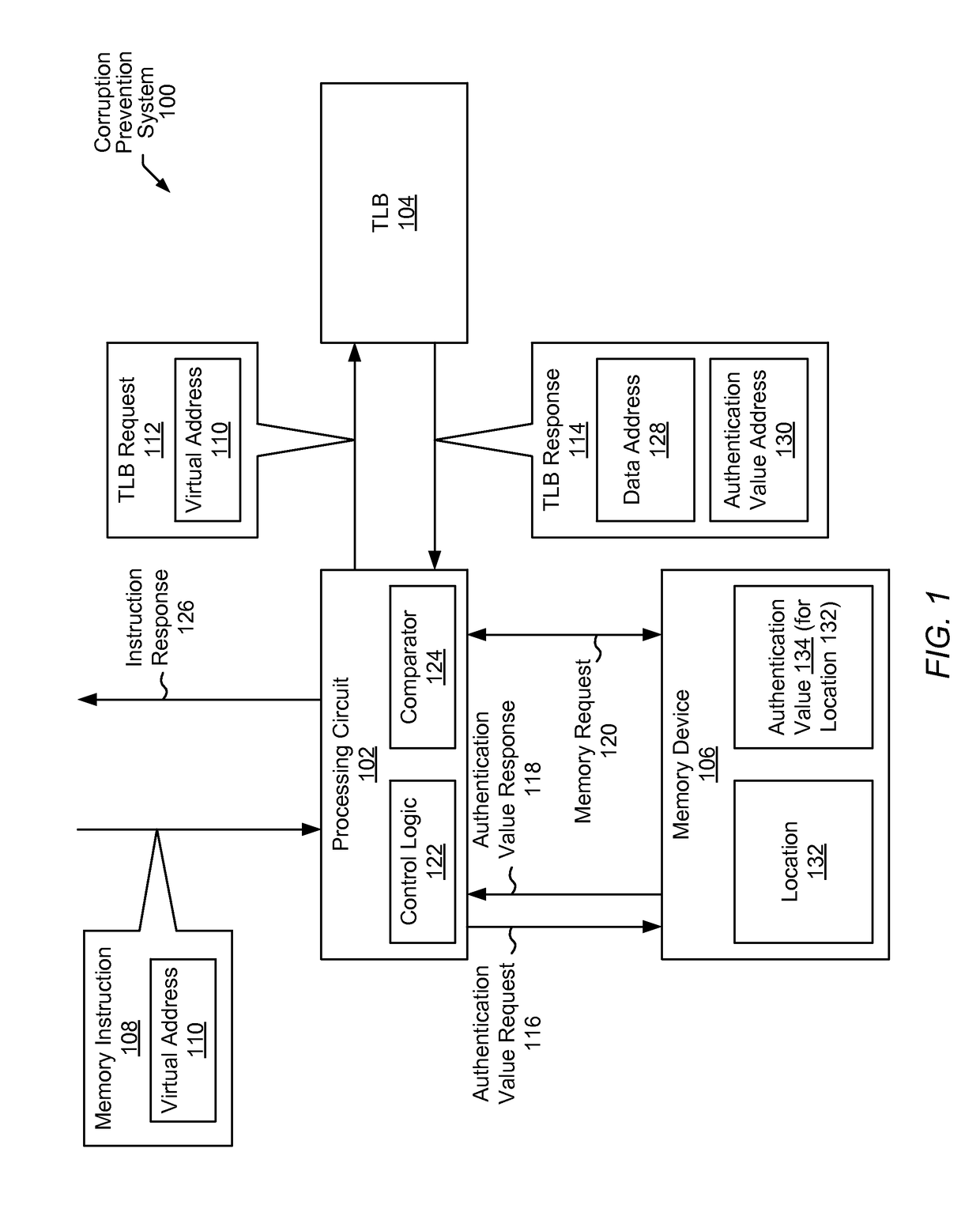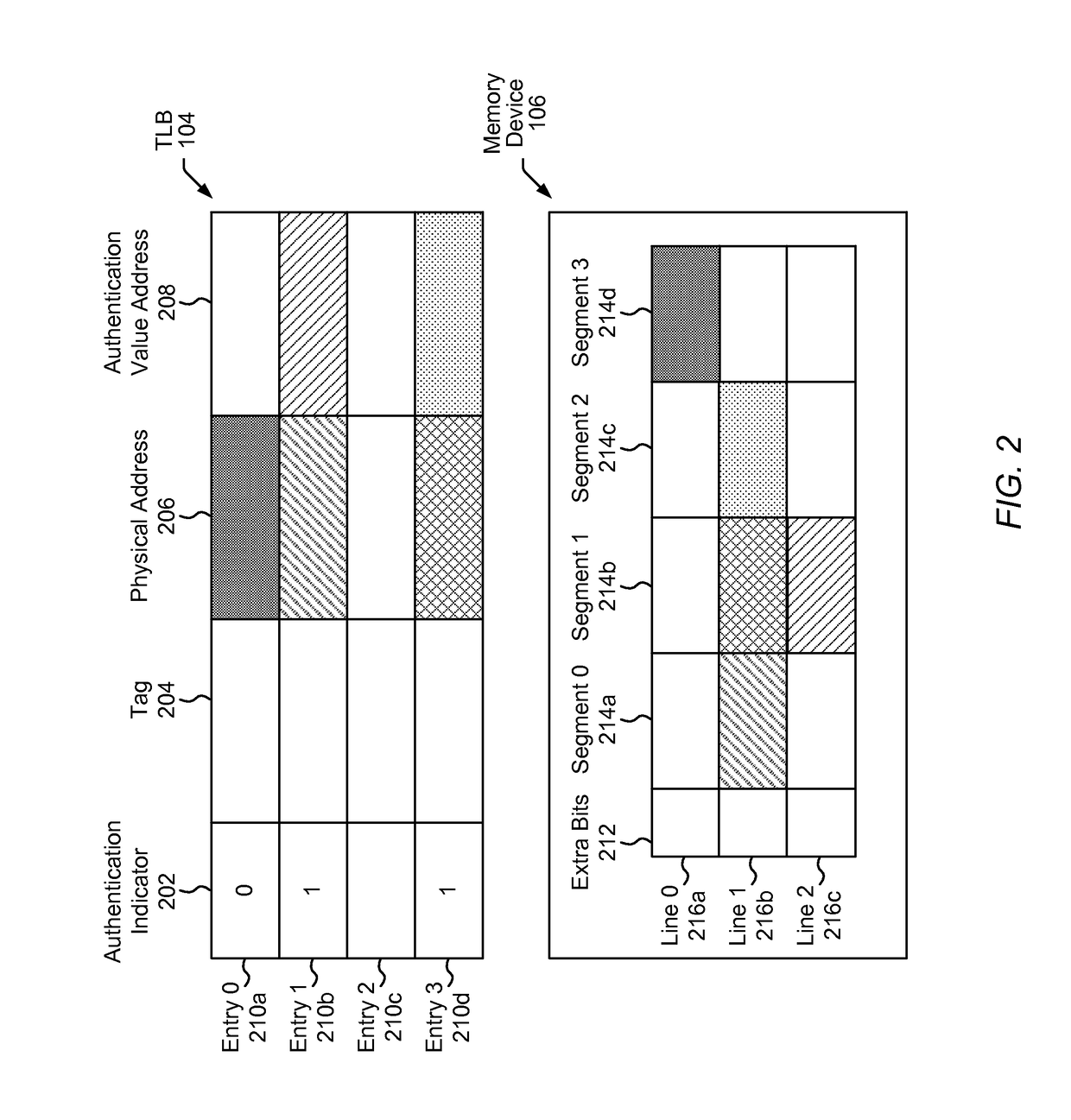Memory corruption prevention system
a memory corruption and prevention system technology, applied in the field of memory corruption prevention system, can solve problems such as memory corruption, contents of a memory location are unintentionally modified, and memory corruption occurs
- Summary
- Abstract
- Description
- Claims
- Application Information
AI Technical Summary
Benefits of technology
Problems solved by technology
Method used
Image
Examples
Embodiment Construction
[0028]A corruption prevention system is disclosed that may detect memory corruption such as memory access errors in which data is improperly read from or stored to an incorrect memory location. In one embodiment, the corruption prevention system uses authentication values (e.g., “color” data or other program data) to determine whether a memory instruction is authorized to proceed. These authentication values may be stored at a memory device and, in some cases, additionally stored as part of a physical address of corresponding data (e.g., at a translation lookaside buffer (TLB)).
[0029]As used herein, “memory corruption” is used in a broad sense, and may take various forms and result from many different causes, including bad pointers, buffer overruns, malicious attacks, etc.
[0030]The authentication values may include different information in different embodiments. In particular, in some embodiments, the authentication values may include color data, which, when differing from expected ...
PUM
 Login to View More
Login to View More Abstract
Description
Claims
Application Information
 Login to View More
Login to View More - R&D
- Intellectual Property
- Life Sciences
- Materials
- Tech Scout
- Unparalleled Data Quality
- Higher Quality Content
- 60% Fewer Hallucinations
Browse by: Latest US Patents, China's latest patents, Technical Efficacy Thesaurus, Application Domain, Technology Topic, Popular Technical Reports.
© 2025 PatSnap. All rights reserved.Legal|Privacy policy|Modern Slavery Act Transparency Statement|Sitemap|About US| Contact US: help@patsnap.com



